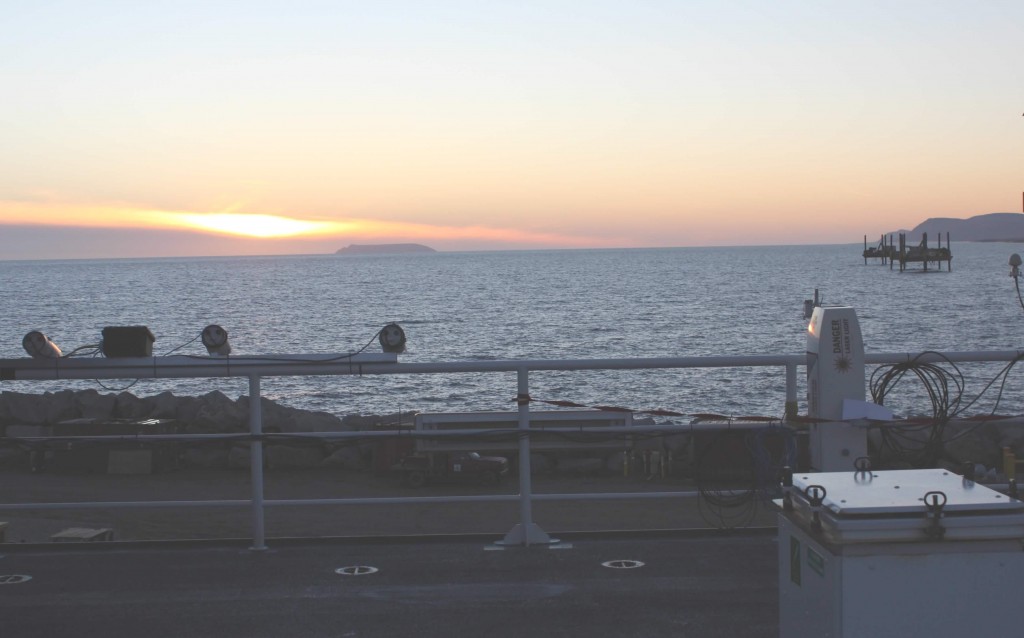by Ola Persson
Nome is a small town on the Norton Sound in western Alaska. This week, it was host to the staging of the Sea State research cruise of the new National Science Foundation icebreaker, the R/V Sikuliaq. The primary objectives of Sea State is to measure the impact of waves and surface fluxes on the autumn freeze-up of the Arctic sea ice. It took several days of busy activity for the 23 research scientists, the three marine science technicians, and the 22 crew members to unpack, prepare, and mount the instruments needed for the science mission of the upcoming 42-day cruise. Wave buoys were unpacked and prepared for deployment; Sergio Pezoa spent many hours on top of the prominent bow mast in snow and a biting wind to mount a large array of meteorological instruments; the deployment of an electromagnetic device for measuring ice thickness was tested; arrays of cameras were calibrated with a large checkerboard placard driven around the ship by a small boat; cables were run from all possible locations on the ship to the lab on the main deck; the three science technicians Bern McKiernen, Ethan Roth, and Steve Roberts were needed everywhere at the same time; instrument functions were tested; computers and monitors were tied down to prevent damage from the expected rough conditions; and the myriad of empty boxes had to be hauled down into the hold for safe storage. In addition, the team of scientists went through an afternoon of ship emergency training that included donning bright orange watertight “gumby” suits and having demonstrations of the use of fire extinguishers. ( I learned not to hold the CO2 extinguishers by the nozzle, as the cold from the CO2 will cause your skin to freeze to it.) As if there wasn’t enough to do, a looming storm required that the Sikuliaq leave Nome 12 hours earlier than planned. At 9 PM local time on September 30, as the sun was setting through the leading edge of clouds of the impending storm, the gangplank was pulled in by the ship’s crane, the halyards were cast loose by shore crew, and the Sikuliaq left the dock along the Nome breakwater. It was a very picturesque departure from civilization and the beginning of a 6-week science adventure. The first goal of the cruise was to deploy an oceanographic mooring at 73 N, 159 W, which should be reached on Saturday morning, Oct 3. In the meantime, installations will be finalized and instruments will be tested. Regular launches of weather balloons and measurements with an underway ocean temperature and salinity profiling unit will begin.

